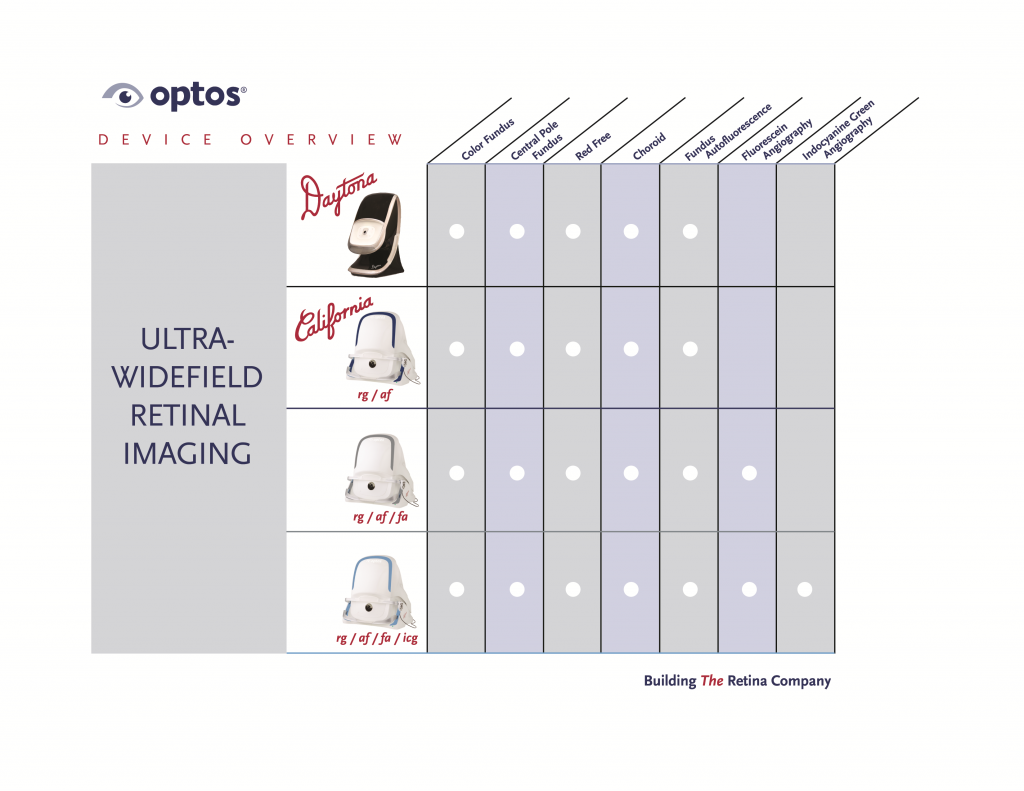One of the questions ocular health practitioners ask about Ultra-widefield retinal imaging (UWF™) is about optomap acceptance rates. Will patients really be interested in a new and possibly unfamiliar diagnostic procedure that’s not covered by insurance? It’s the right question, because even a proven technique such as UWF is of limited clinical value if patients are reluctant to authorize the procedure.

Which optomap enabled ultra-widefield device is the right fit for your practice?
Many doctors using UWF imaging report high optomap acceptance rates, leading to improved patient experience, better patient flow, and faster recovery of initial system costs. They’ve accomplished this by engaging their patients on a number of levels.
Explaining the Benefits
One common practice among doctors reporting high acceptance rates is that they take the time to explain to their patients the real medical benefits from incorporating an optomap into their annual examination. While comfort and convenience are also patient considerations, having an engaged and properly trained staff that can explain the medical benefits before, during, and after the exam is more impactful. As one doctor said:
“Explaining the tests you are performing, including high-level testing like optomap, that come with an out-of-pocket expense, need not add significant time to pre-testing. For that small amount of time and effort, you get a patient who fully understands the service you are providing — and doesn’t mind paying a little extra for it. In my practice, I’ve found that effectively presenting the clinical benefits has lead to a 90% patient acceptance rate.” – Eric White, O.D., talking about the effectiveness of Daytona, and optomap in his California practice
A focus on the medical benefits is important for three reasons. First, involving the patient in a diagnostic care decision is an opportunity to build credibility and trust. Second, it reinforces the practitioner’s role as a source of sound medical advice. Finally, it sets the stage for a positive post-examination discussion.
Discussing the Results
Another part of achieving high acceptance rates is the post-examination discussion. For the first-time patient, he or she gets a detailed, illustrated review of the doctor’s findings as opposed to the usual oral summary.
“We have seven doctors rotating days and seeing patients in this office, so the optomap allows each doctor to stay consistent with the way they are viewing, making notes and documenting what is seen in each patients’ retina. This allow us all to obtain an ultra-widefield view and enables all of our doctors to see past notes and allows for an easy way to follow up. It is always better to show a patient with a visual what is going on with their vision versus telling them with words.” – Suchita Thakkar, O.D., talking about optomap use in her Rhode Island practice
What’s unsaid is that the process of reviewing the patient’s optomap image with them validates their decision to undergo the procedure. In other words, the benefits promised to the patient in the initial pre-test discussion are immediately and fully realized. This is can be particularly impactful in instances when unexpected pathology is uncovered.
Demonstrating Commitment
Without previous indications of a specific medical condition, a patient’s decision to decline an optomap examination is understandable. But doctors with high acceptance rates often address this by offering a free first optomap.
“In our practice, the annual acceptance rate for optomap is 93 percent. There are some patients who select to have the scan once every two years. Patients need to opt out of the procedure after reviewing a form that explains why the doctors want the information that is available through this procedure. Normally, practitioners don’t give away a professional service at no cost, but for the few who don’t want to pay, I want them to understand that I want the information from that scan so I do the first one for free. To date, each of the patients I have not charged has become a repeat patient who has paid for an annual scan from that point on.” – Laurie Sorrenson, OD, talking about her UWF device in use in her Texas practice
A free optomap is not a gimmick. Most patients will perceive their doctor’s willingness to forgo payment as:
- a personal commitment to them as individuals; and
- another indication of the optomap’s diagnostic value.
Good Acceptance Rates Just Don’t Happen
The path to good optomap acceptance rates can be summarized in two points — patient education and staff engagement. A concerted effort to explain the medical benefits, demonstrate those benefits during the post-examination discussion, and outreach to reluctant patients can yield significant results, including improved clinical outcomes, a better patient experience, more engaged staff, and a stronger practice.
Please contact us for more information on how adding optomap to your practice can provide you with the benefits above as well as potentially improving your bottom line.
